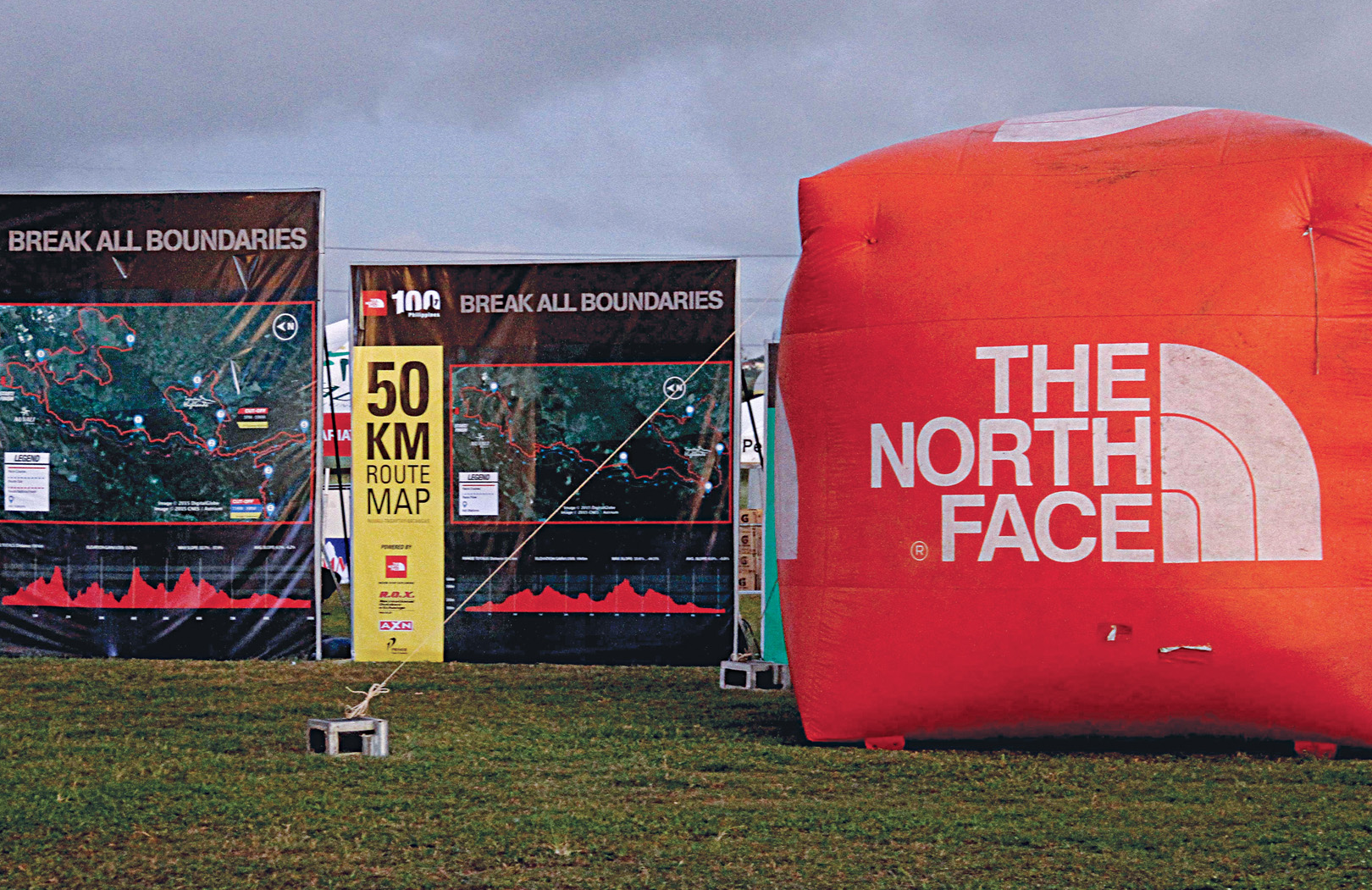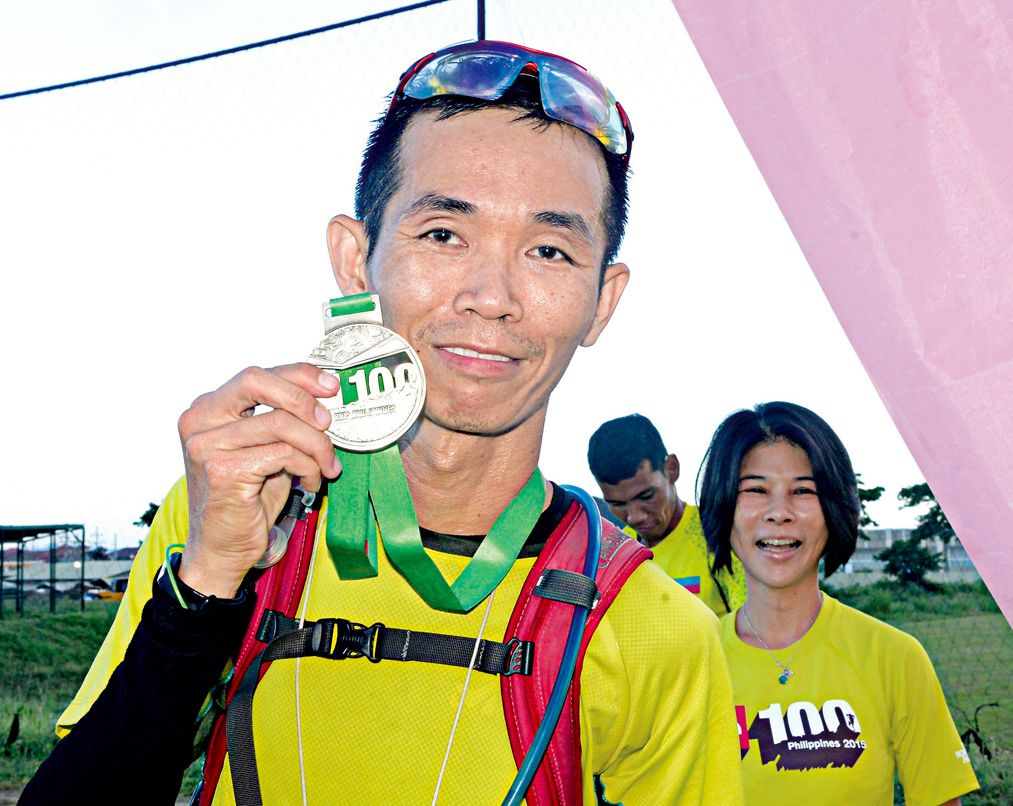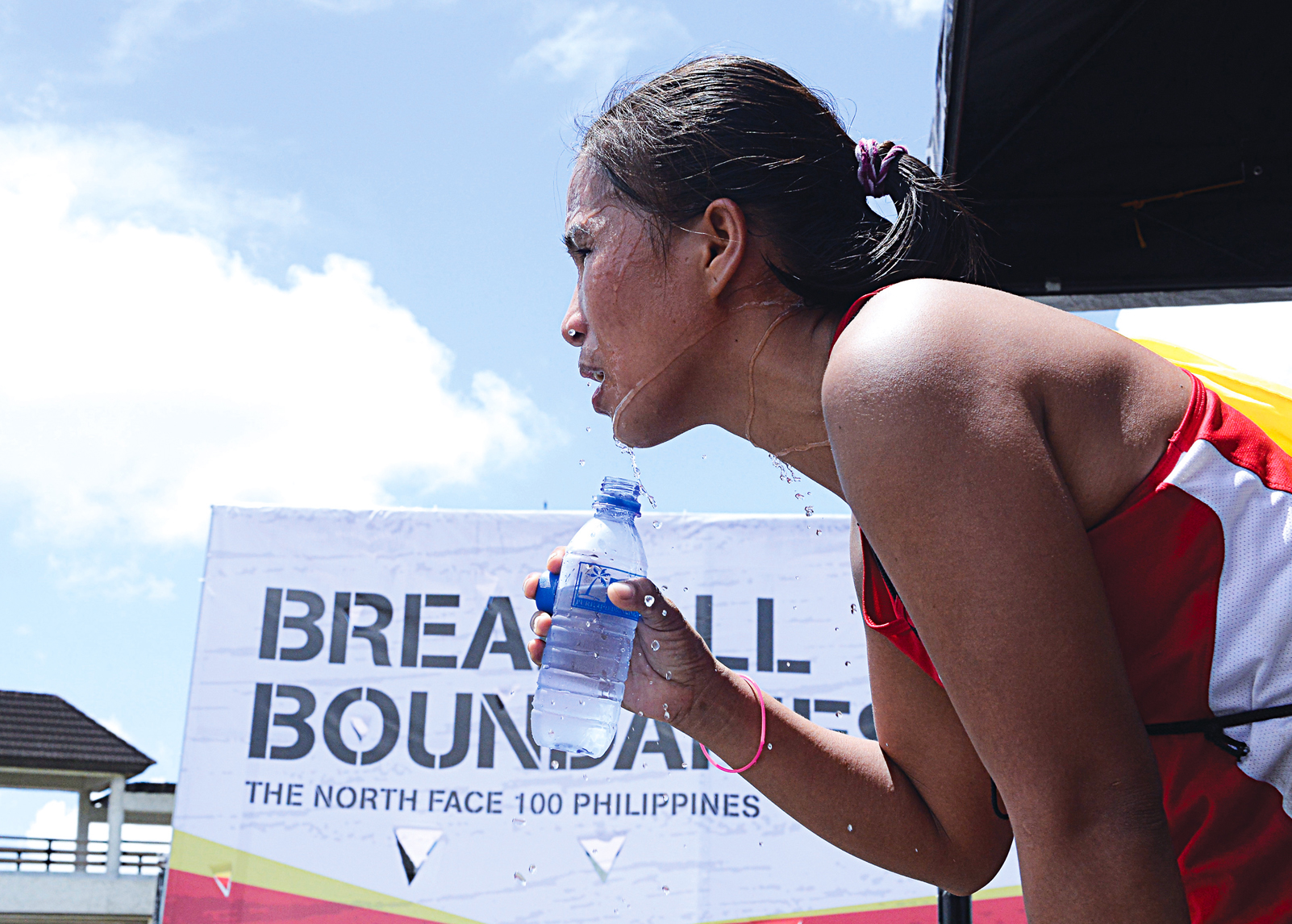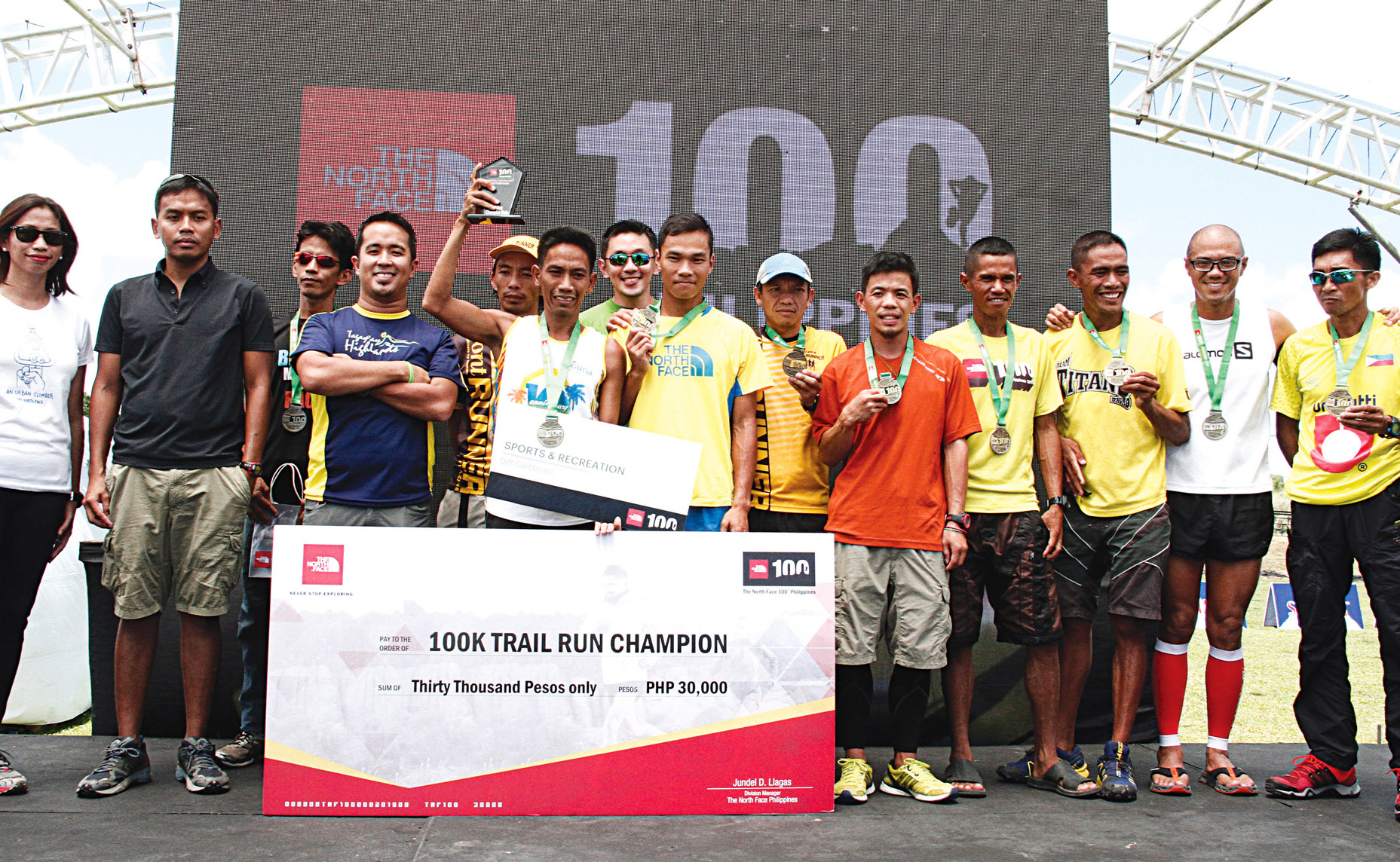
By the 3rd station, some 100k runners start making tough calls of DNF (Did Not Finish). “It’s the inaugural race in this venue. It’s quite common that only a few will finish. In the previous editions, say the TNF100 in Batangas, out of 100, only 15 finished. In the second race in Clark, the weather was ridiculous and it rained; only 19 finished. I was the 18th,” says Neville.
With the panoramic lake views that accompany runners, the grueling climbs (rappelling included) become their source of strength for the long, constant mind battle.
“People underestimated the race. Right now, everyone’s licking the wounds and saying this is the toughest. Some of the courses were very technical. A lot of people are not used to that. For the most part, the weather was really brutal.”

With a good technical operations team who took 3-4 months to establish the race course, TNF100 Philippines remains to be one of the toughest and most anticipated trail running series among those of other Asia-Pacific countries.
Since the Nuvali course was already established before for another TNF race, it was just a matter of connecting it to the one they made in Tagaytay, and extending all the way to Batangas.

In the end, only 49 out of 230 100k entries prove triumphant, with the first runner ending at 14:46:32. Yuen Loong Hoo ends up as the 42nd finisher at 26:27:47—the only one who completed the race among other 17 Malaysian runners. For the 50k category, 121 out of 161 entries made it. Only two Malaysians completed the race with Adrian Jeyakumar finishing at 10:17:26 in 12th place.
“The 100k runners said it’s really tough—tougher than the previous edition. They admitted that they underestimated the heat. It’s a classic case of The North Face.”
He adds, “When I first joined TNF100 here, after the 50k mark, I tapped out. It was tough. I participated again on its second year and I finished it. For a lot of times, we have been saying that there’s an inherent danger. You do not wake up and say I would join this race. There has to be some level of skill. It also doesn’t mean that because you run 100k that you can finish it. It’s difficult like that, but it’s the charm of TNF. It’s one of those things that you want to cross out on your bucket list. You’re defeated this year, but you want to do it again next year.”

TNF has been growing its number of participants from merely a hundred since 2008 to having nearly 2,000 participants. Most of the people who finished TNF100 have mountaineering background.
“We want to have it here again next year, because we want to give people another shot at this. They know what they’ve done wrong, what their mindset should be. It’s the same for us. There’s a lot of room for improvement. There’s a lot of birth pains for this race, for instance the logistics, especially for those who took a DNF, the cut-off times and the website information. We want to apologize for any failures from our part, but we did our best for this inaugural race, and we promise to continue improving. We grow together with the community, and this is also how the sport of trail running and TNF will grow on all of us.”





























































































